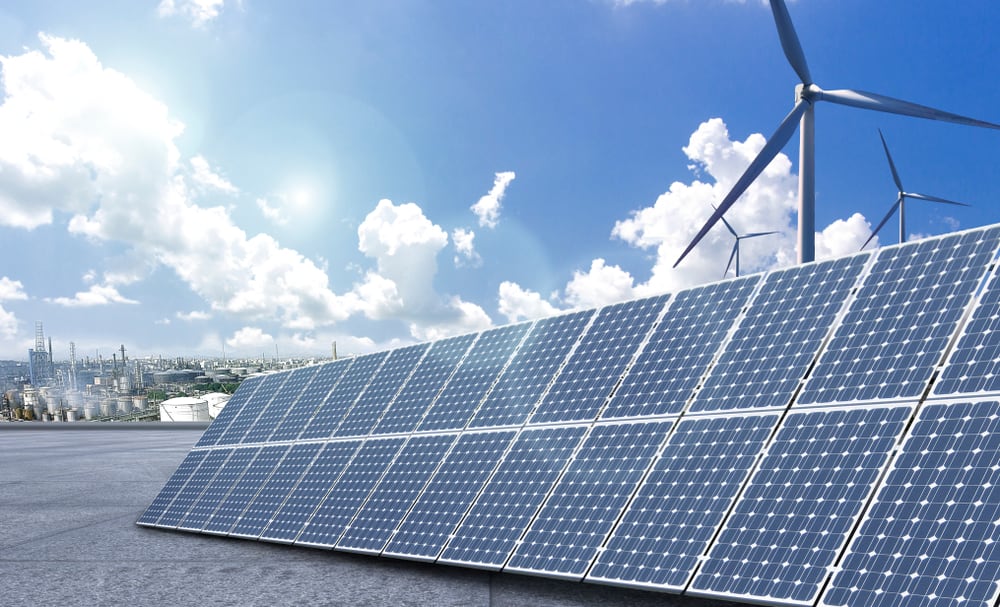Revolutionize Your Energy Usage with HJT Solar Cell Innovation
In recent years, the issue of climate change and the consequent depletion of non-renewable resources has caused widespread concern globally. As a result, renewable energy sources have gained a lot of popularity as an alternative to traditional power sources.
Among them, solar energy has emerged as one of the most popular options due to its eco-friendly nature and potential to provide a sustainable source of power. Solar energy harnesses the power of sunlight and converts it into electricity using solar cells, which are made up of semiconductor materials like silicon. However, despite its potential, the efficiency of solar cells remains a significant challenge in making solar energy more accessible and practical.
This inefficiency is mainly due to the fact that solar cells cannot convert all the sunlight that falls on them into usable energy. As a result, the amount of energy that can be harvested from solar cells is limited. This is where HJT solar cells come into the picture. HJT stands for Heterojunction with Intrinsic Thin layer, which is a type of solar cell that uses a combination of thin layers of different semiconductor materials to improve energy efficiency.
HJT solar cells have shown to be more efficient than traditional solar cells and have the potential to unlock maximum energy efficiency from sunlight. In this blog post, we will explore the potential of HJT solar cells and why they could be the key to making solar energy more accessible and practical.
What is an HJT Solar Cell?

Heterojunction with Intrinsic Thin layer (HJT) solar cells are a promising hybrid technology that combines the advantages of traditional solar cells with the benefits of thin-film solar cells. HJT solar cells are designed to address the limitations of traditional solar cells that have a limited efficiency range. The HJT solar cells employ a unique structure that consists of a thin-film layer of amorphous silicon, which is sandwiched between two layers of crystalline silicon, forming a heterojunction. This innovative design allows HJT solar cells to capture a broader range of light energy than traditional solar cells, resulting in increased efficiency and power output.
The use of amorphous silicon in the thin-film layer provides several benefits, including the ability to capture a broader range of light wavelengths, making HJT solar cells more efficient in low-light conditions. The thin-film layer also reduces the amount of material required for solar cell production, making HJT solar cells more cost-effective. Additionally, the amorphous silicon layer helps to minimize electron-hole recombination, which can lead to a decrease in the efficiency of traditional solar cells.
Furthermore, the use of a heterojunction in HJT solar cells helps to reduce energy losses caused by defects and impurities that are commonly found in traditional solar cells. The heterojunction structure creates a built-in electric field that separates the electron-hole pairs generated by the absorbed photons, preventing them from recombining before they can be collected as electric current. This design feature helps to improve the efficiency and performance of HJT solar cells.
How to do HJT Solar Cells Work?

HJT solar cells are a type of solar cell that utilizes the concept of heterojunction. This term refers to the interface between two distinct materials that possess different electronic properties. In HJT solar cells, the heterojunction is established by joining two different types of silicon, each having a different band gap.
The band gap is the minimum amount of energy that is needed to liberate an electron from its atom, thus allowing it to conduct electricity. This means that the two silicon types used in HJT solar cells have different abilities to absorb and emit light, leading to the creation of a more efficient solar cell.
The two different silicon types used in HJT solar cells are:
- P-type silicon: P-type silicon has an excess of holes (positive charge carriers) that can move in the presence of an electric field.
- N-type silicon: N-type silicon has an excess of electrons (negative charge carriers) that can move in the presence of an electric field.
When P-type and N-type silicon are brought together to form a heterojunction, a depletion region is formed between them. This region is where there are no free charge carriers. The depletion region acts as a barrier for the flow of electrons and holes across the junction.
When light falls on the HJT solar cell, it generates an electron-hole pair in the depletion region. The electron moves toward the N-type layer, and the hole moves toward the P-type layer. The electric field generated by the heterojunction forces the electron and hole to move toward the opposite layers. The movement of electrons and holes generates a voltage difference across the HJT solar cell, which can be used to produce electrical energy.
Advantages of HJT Solar Cells:
Heterojunction with Intrinsic Thin layer (HJT) solar cells is a relatively new technology in the field of photovoltaics that offer several advantages over traditional solar cell technologies. some of these advantages:
- High Efficiency: HJT solar cells have an efficiency range of 22% to 25%, which is higher than traditional solar cells that have an efficiency range of 15% to 20%.
- Low Temperature Coefficient: The temperature coefficient of HJT solar cells is much lower than that of traditional solar cells. This means that HJT solar cells can generate electricity even at high temperatures.
- Low Light Sensitivity: HJT solar cells have a low sensitivity to changes in light intensity. This means that they can generate electricity even in low-light conditions.
- Long Lifespan: HJT solar cells have a longer lifespan than traditional solar cells. This is because the HJT solar cell design prevents degradation of the cell over time.
- Environmentally Friendly: HJT solar cells have a lower carbon footprint than traditional solar cells. This is because they require less energy to manufacture.
Disadvantages of HJT Solar Cells:
While HJT solar cells offer several advantages over traditional solar cells, there are also some notable disadvantages that should be taken into consideration:
- High Cost: HJT solar cells are more expensive to manufacture than traditional solar cells.
- Complexity: The HJT solar cell technology is more complex than traditional solar cell technology. The manufacturing process requires additional steps and materials, which increases the cost of production.
- Limited Availability: HJT solar cells are not widely available in the market, which limits their adoption.
- Lower Production Efficiency: The production efficiency of HJT solar cells is lower than that of traditional solar cells. This means that the number of HJT solar cells that can be produced is lower than that of traditional solar cells.
- Sensitivity to Shading: HJT solar cells are sensitive to shading. Even a small portion of the cell is shaded can significantly reduce the cell's power output.
Applications of HJT Solar Cells
Heterojunction (HJT) solar cells, which are composed of multiple layers of semiconducting materials, have a diverse range of practical applications due to their high efficiency and low manufacturing costs. HJT solar cells are commonly used in various settings, such as residential, commercial, and industrial, to generate electricity by converting solar energy into electrical power
HJT solar cells have a wide range of applications, including:
- Residential and Commercial Buildings: HJT solar cells can be used to generate electricity for residential and commercial buildings. They can be installed on rooftops, walls, and windows to provide a sustainable source of power.
- Transportation: HJT solar cells can be used to power electric vehicles. They can be integrated into the body of the vehicle to generate electricity.
- Spacecraft: HJT solar cells can be used to power spacecraft. They can generate electricity from the sun's energy in space.
- Military Applications: HJT solar cells can be used in military applications to power remote military bases and equipment.
Conclusion
HJT solar cells are a promising technology that could revolutionize the solar industry. Their high efficiency, low-temperature coefficient, low light sensitivity, and long lifespan make them an attractive option for generating electricity. However, their high cost, complexity, limited availability, lower production efficiency, and sensitivity to shading are some of the challenges that need to be addressed to make them more accessible. With further research and development, HJT solar cells could become the key to unlocking maximum energy efficiency and a sustainable future.
Sources
https://www.intechopen.com/chapters/60109
https://www.sciencedirect.com/science/article/pii/S1364032118304116

